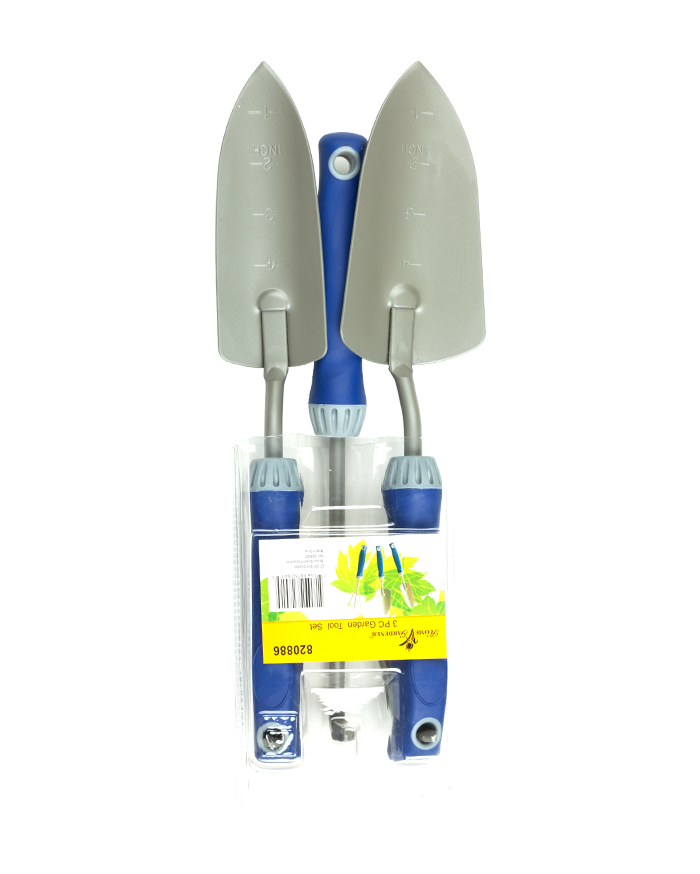



Add: No.5, Yangmei Road, Industrial Area, Zhangting Town 315410, Yuyao city, Ningbo Zhejiang, China
Tel:+86-574-62988703
Fax:+86-574-62988716
[email protected]
Every garden has different needs, but they all need the […]
Every garden has different needs, but they all need these 10 basic tools.
Depending on the level of sophistication of your garden, you will need a variety of tools to get the job done. If you only have a few potted plants, a few hand tools will suffice. But if you're full of rows and rows of plants that you hope to harvest in the fall, you're going to need some more powerful tools to get the job done.
Here are 10 essential garden tools and their uses:
Trowel
The troker will easily be one of the most used and important tools in your arsenal. Essentially, it's a handheld shovel that can be used for moving soil, digging, weeding, composting, and more.
Garden knives come in all shapes and sizes and are usually made from a combination of plastic or wooden handles with stainless steel.
Shovel
For jobs where the trowel is too large, a shovel will be your tool of choice. A shovel is usually a short-handled shovel, usually made with a rectangular blade and a vertical "D" shaped handle for extra grip when digging.
Unlike pointed bowl shovels, which are best for digging and breaking up soil, shovels are better for slicing and moving loose soil through stubborn roots.
Bow rake
Rakes aren't just for collecting leaves.
Bow rakes can be used to collect or remove loose debris from around the garden, and they are usually made of stronger steel than leaf rakes. This makes them better for light plowing, weeding, leveling soil, and spreading loose materials like mulch.
Hand rake
If you're working on a small scale and don't want to damage an existing plant, you probably don't want to struggle with a big rake for a larger job. For this, you will use a manual rake.
Similar to its larger siblings, manual rakes come in many forms and are used for similar jobs on a smaller scale. To collect or remove debris, a lightweight hand rake with flexible tines can be used. But you'll also find heavy-duty steel rakes with tough tines for breaking up soil and light plowing.
Hoe
Heads are classic gardening tools. There are many different types, but the most common is the flat-bottomed shovel – with a flat blade at the end of a typical wooden handle.
The blade is perpendicular to the handle, making it very easy to move and shape soil as well as weeding. The escargot can also be used to dig narrow, shallow trenches for planting.
Weed puller
Gone are the days of spending hours on your hands and knees taking all those pesky weeds out of the garden. While many tools in your arsenal can help weed your garden, few are better than those designed specifically for weeding.
Weed pullers come in many different styles, but the idea is generally the same: wrap the weed around the teeth, twist or clip, and pull. Some weeders also have lever bars so you can pull weeds out at an angle. In theory, weeds should be removed from the soil, including the roots.
Dandelion excavator
A full-fledged weeder is great for removing large numbers of large weeds. However, if you have smaller weeds living among your plants, you will need more delicate tools to do the job. For this, you'll need a hand-held weeder, commonly known as a dandelion digger.
Handheld weeders work similarly to their larger siblings, and they're designed to entangle weeds and the roots of your teeth to (hopefully) remove the entire weed, root and whole. Typically, a dandelion digger looks like a flat-blade screwdriver, but the end is often split to help entangle weeds. Push it down with the weed, twist and pull.
Pruning shears
Some plants need to be cut. For this job, you'll need some pruning shears, which are basically scissors on steroids. Also known as pruning tongs, they are used to cut small branches and branches, sometimes up to an inch (2.5 cm) thick.
For some light jobs that require a lot of cutting, you can also use garden shears, which are a step up from pruning shears. This is a two-handed tool often used to trim hedges.
Flip machine
For heavy cutting, you'll need a scraper in the armory. Pruners generally have the same blade style as pruning shears, but with a longer handle for extra leverage. The longer handle not only allows you to cut thicker branches, but also allows you to go further without the need for a step stool or ladder.
Hack saw
For anything bigger than your clipper can handle, you'll need a hacksaw. Basically, it's a handsaw with extra-coarse teeth that can quickly machine branches up to 6 inches (15 cm) thick.
